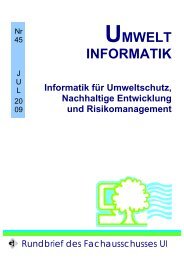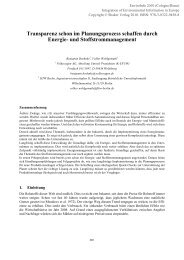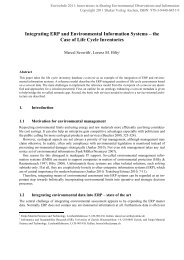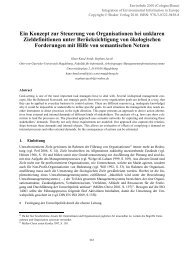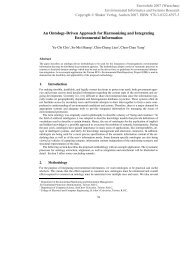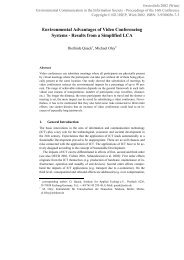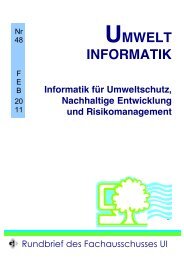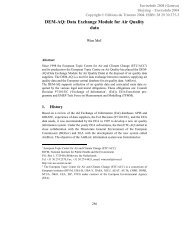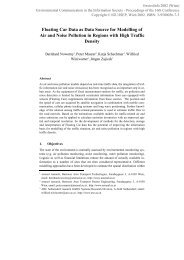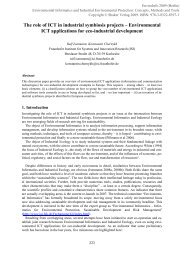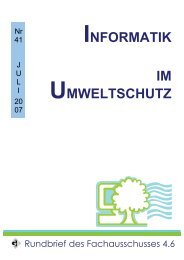Ontology based description of satellite imageries for application ...
Ontology based description of satellite imageries for application ...
Ontology based description of satellite imageries for application ...
Create successful ePaper yourself
Turn your PDF publications into a flip-book with our unique Google optimized e-Paper software.
Channel/WavelengthSpatialResolution(m)TemporalResolution(day)Swath (km)ApplicationOpticalVNIR, SWIR 20 – 30 15 – 25 100 – 200 Vegetation (<strong>for</strong>estry,agriculture),coastal zone and inland waters,soil,geology, Multiple crop<strong>for</strong>ecastingVNIR, SWIR 2.5 -10< 1VNIR, MIR,TIRImaging stereopairsRadarL (~23cm)C (~3 – 7 cm)90250 – 10001000 - 4000Urban <strong>application</strong>Daily ~1000 Ocean color, Sea surfacetemperature Regional vegetationmonitoring; atmospheric, cloude(weather), parameter retrieval2.5 – 15 ~100 Elevation mapping, 3-Dmodelling3 – 100 30 - 35 Water mask, flood, cropmonitoring, <strong>for</strong>estry, surfaceland de<strong>for</strong>mationTable 1.Relationship between specific <strong>satellite</strong> imagery characteristics and <strong>application</strong>sFurthermore, Satellite images also have properties such as processing level, spatial coverage andacquisition date (Fig 2.). Data domain is organized by classes, subclasses and restrictions in order topreserve the consistency <strong>of</strong> domain, expressed as the follows.• Quickbird and Landsat belong to Optical class.• Optical and Microwave type must have spatial-, temporal resolution and wavelengthproperties.• Each observation only has exactly one spatial-, temporal resolution. EtcObjects that can be observed using <strong>satellite</strong> images are also defined by classes and subclasses (Figure3.) and they are described regarding to user requirements, <strong>for</strong> example <strong>for</strong>est belongs to land usegroup as part <strong>of</strong> the <strong>application</strong> domain. In this case, the domain was defined by two main classes i.e.Natural and man-made classes (Figure 3.). They have many subclasses regarding to possible<strong>application</strong>s and real world objects. The hierarchy <strong>of</strong> classes presents relationships between observedobject and possible <strong>application</strong>s <strong>of</strong> user interest.Copyright 2011 Shaker Verlag Aachen, ISBN: 978-3-8440-0451-9





